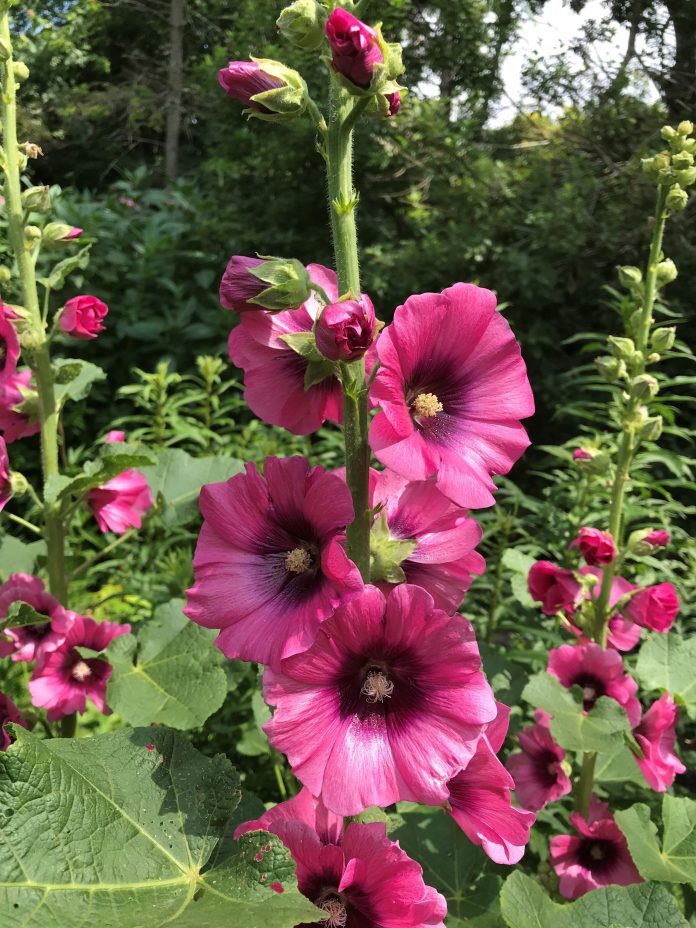
Our patience for long stories seems to be short. Thank you, Twitter, for reminding us that many people have a maximum 280-character appetite for stories. In this respect, we are thankful that our readers have the patience for depth.
Gardeners are people too and maybe some of you would like to tighten up your gardens’ performance, get more bang for the buck, more colour, pollinator activity more often. Sparklers and star bursts that go higher, longer, brighter.
We can help you with that. We have created this plan for people who want to see more change, more often in their garden. The kind of change that holds your attention.
- Start early. Plan to plant now for the earliest possible horticultural show come spring. Dutch bulbs have arrived at your favourite garden retailer, and we urge you to get in and buy up the best stock while the selection is at its best. We guarantee that the snowdrops, which literally push up through the March snow, will give you a thrill greater than the fat rhododendron with full-bodied blooms come mid May. Why? Winter is long, and we are starving for natural colour, a word from nature and for life outside our back door. Other early performers include crocus, narcissus, and blue scilla. Plant spring flowering bulbs now.
- Succession blooming. A garden is a work of art that is ever changing. Except in winter, perhaps. For proof, try and walk through your garden slowly every day. In time, you will see that there are no two days the same. Plants grow, flower, produce seeds and do not stop until the hard frost of November puts a temporary stop to the action. We recommend that you study the plants that catch your eye while in bloom. Consider what you like to see in spring, summer and fall. Walk your neighbourhood, join a local horticultural society, go online, visit our website www.markcullen.com, join a gardening Facebook group and talk to your neighbours – they might even be willing to split what they have with you.
- Fireworks. If you like plants that go “bingo!” when they bloom, look for the following favourites:
- Eastern Redbud (Cercis canadensis). It’s hard to believe this beauty is native to our land. Redbud trees flower on old and new wood, creating a multi dimensional linear spectacle of plugged in, rose red blossoms in early May. We can not describe any other flowering plant this way as there isn’t one.
- Hollyhocks (Alcea rosea). An amazing show off with a pedigree. Early settlers in Canada grew hollyhock from seed (easy to transport) for reliable colour on long stems, up to two metres in height. The biannual plants produce seeds that fall into the garden and often germinate there, producing colour two years later. Like a shooting star, they can bloom on the tip of the flower stem while dropping seed from earlier blooms at the bottom of the same stem. Sun.
- Blazing Star (Liatris spicata). A native, amazing upright, shooting star of purple, magenta or blue that attracts pollinating bees. Grow from bulbs or as perennial plants. Grows to 40 cm. Full sun.
- Delphiniums (Delphinium elatum). Much like hollyhocks, they steal the show come mid summer with scarlet, purple, pink, blue or white blossoms that march up a stem about two metres high. When they are in bloom it is hard to notice anything else in the garden. They are the child in the family that attracts all the attention when they are in the room.
- Rose of Sharon (Hibiscus syriacus). In bloom now in a garden near you. You can not help but notice them as they produce striking bicoloured, double blossoms on sturdy stems, up to three metres high and two metres wide. Bloom for several weeks, up to three months. Perfect for the impatient, demanding gardener.
In the garden and on the reading list, there is a time for depth and a time for action. Take time to indulge in both.
Mark Cullen is an expert gardener, author, broadcaster, tree advocate and Member of the Order of Canada. His son Ben is a fourth-generation urban gardener and graduate of University of Guelph and Dalhousie University in Halifax. Follow them at markcullen.com, @markcullengardening, and on Facebook.

